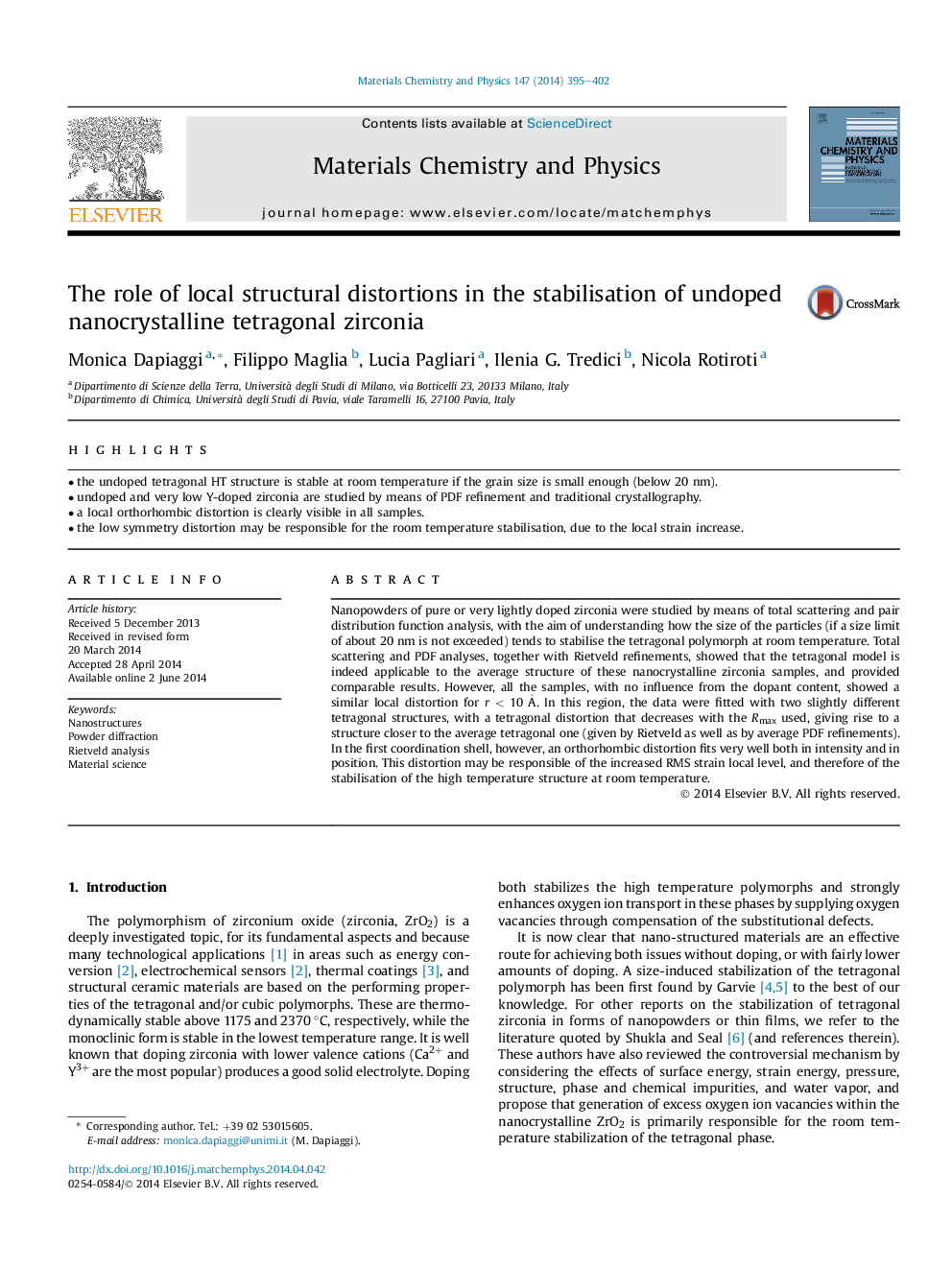| Article ID | Journal | Published Year | Pages | File Type |
|---|---|---|---|---|
| 1521810 | Materials Chemistry and Physics | 2014 | 8 Pages |
Abstract
Nanopowders of pure or very lightly doped zirconia were studied by means of total scattering and pair distribution function analysis, with the aim of understanding how the size of the particles (if a size limit of about 20 nm is not exceeded) tends to stabilise the tetragonal polymorph at room temperature. Total scattering and PDF analyses, together with Rietveld refinements, showed that the tetragonal model is indeed applicable to the average structure of these nanocrystalline zirconia samples, and provided comparable results. However, all the samples, with no influence from the dopant content, showed a similar local distortion for r < 10 Ã
. In this region, the data were fitted with two slightly different tetragonal structures, with a tetragonal distortion that decreases with the Rmax used, giving rise to a structure closer to the average tetragonal one (given by Rietveld as well as by average PDF refinements). In the first coordination shell, however, an orthorhombic distortion fits very well both in intensity and in position. This distortion may be responsible of the increased RMS strain local level, and therefore of the stabilisation of the high temperature structure at room temperature.
Related Topics
Physical Sciences and Engineering
Materials Science
Electronic, Optical and Magnetic Materials
Authors
Monica Dapiaggi, Filippo Maglia, Lucia Pagliari, Ilenia G. Tredici, Nicola Rotiroti,
